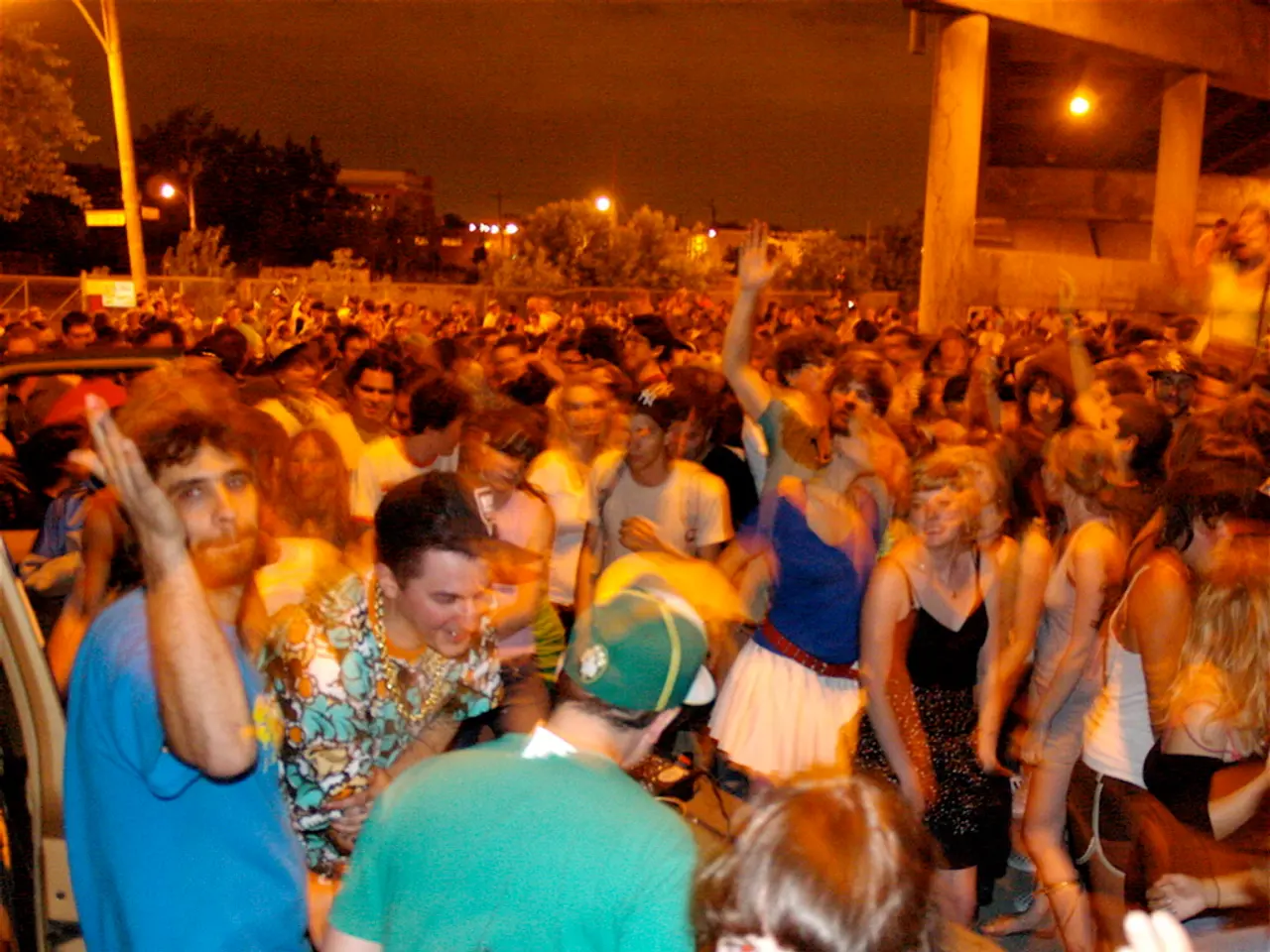Life Story of Music Icon Elvis Presley
Elvis Presley's Decline in the 1970s: A Tragic Tale of Prescription Drug Abuse and Overwork
Elvis Presley's career in the 1970s was marked by a significant decline, a period characterised by heavy reliance on prescription drugs and an exhausting touring schedule.
During the early 1970s, Presley became increasingly dependent on barbiturates and other prescription medications, which he received from his physician under the belief that obtaining drugs via prescription was safer than street drugs. This dependency led to serious incidents, including overdoses and a coma in 1973, as well as hospitalizations related to drug addiction[1]. Despite his failing health, Presley maintained an extremely busy concert schedule, with 168 shows in 1973 alone—his busiest year ever—and continued intensive touring in 1974[1][3].
The demanding touring schedule took a heavy toll: on stage, his energy sharply declined, often appearing weak and barely able to stand without support. His voice weakened, and his performances suffered, with audiences noticing his sluggish movements and frequent reliance on the microphone stand for support during shows[1][5]. Additionally, critics and fans observed that his live show repertoire stagnated, shifting away from his early rock and roll hits toward covers and less inspired material, reflecting perhaps his declining creative and physical vigor[3].
His heavy weight gain, erratic eating habits, and further health complications worsened over the mid-1970s, visibly affecting his stage presence and overall well-being. By the time of his final performances, Elvis was a shadow of his former self both physically and vocally, struggling to maintain the dynamism that had once defined his career[5].
Moody Blue, released in July 1977, consists of leftover tracks recorded at Graceland in 1976, three live songs from concert performances in April 1977, and one previously released cut titled "Let Me Be There." The selection of songs on Moody Blue indicates Elvis Presley's affinity for brooding ballads or other songs of regret and loss, which resurfaced as his personal and professional life continued to deteriorate[2]. Moody Blue reached No. 3 on Billboard's Top LP chart and remained on the charts for 31 weeks, and it was certified platinum on September 1, 1977[6].
By 1976, Elvis Presley was personally downhearted and professionally unchallenged, and no one could get him into the recording studio despite his contractual obligations[4]. Elvis carried a gun on him much of the time due to death and kidnapping threats[7]. Elvis' later life was characterized by a life of isolation and self-destructive habits, with little influence to stop his indulgences[8].
In summary, Elvis's decline was caused by:
- Prescription drug abuse, including repeated overdoses and addiction, which significantly impaired his health[1].
- Overwhelming touring schedule, pushing him to perform hundreds of concerts annually despite his physical state[1][3].
- Health deterioration, including weight gain, erratic eating, and declining stamina and vocal strength[5].
- Less varied and inspired live performances, indicating creative and physical exhaustion[3].
The effects were a pronounced deterioration in his live shows, frequent health crises, and ultimately, a tragic decline that culminated in his death in 1977 at the age of 42[1][5].
[1] https://www.biography.com/news/elvis-presley-drug-addiction [2] https://www.rollingstone.com/music/music-news/moody-blue-revisited-486785/ [3] https://www.biography.com/news/elvis-presley-live-1970s-performances [4] https://www.rollingstone.com/music/music-news/elvis-presley-moody-blue-486785/ [5] https://www.biography.com/news/elvis-presley-1970s-decline [6] https://www.billboard.com/music/elvis-presley/chart-history/album/57679 [7] https://www.biography.com/news/elvis-presley-guns [8] https://www.biography.com/news/elvis-presley-later-life
Amidst his struggle with prescription drug abuse, Elvis Presley's fame continued to intertwine with pop-culture, as his declining health and star-studded life played out in the public eye.
As fame and fortune loomed over his personal struggles, it was impossible to ignore the influence of celebrity culture and entertainment, which only intensified the public's fascination with Elvis' tragic tale during his latter years.








